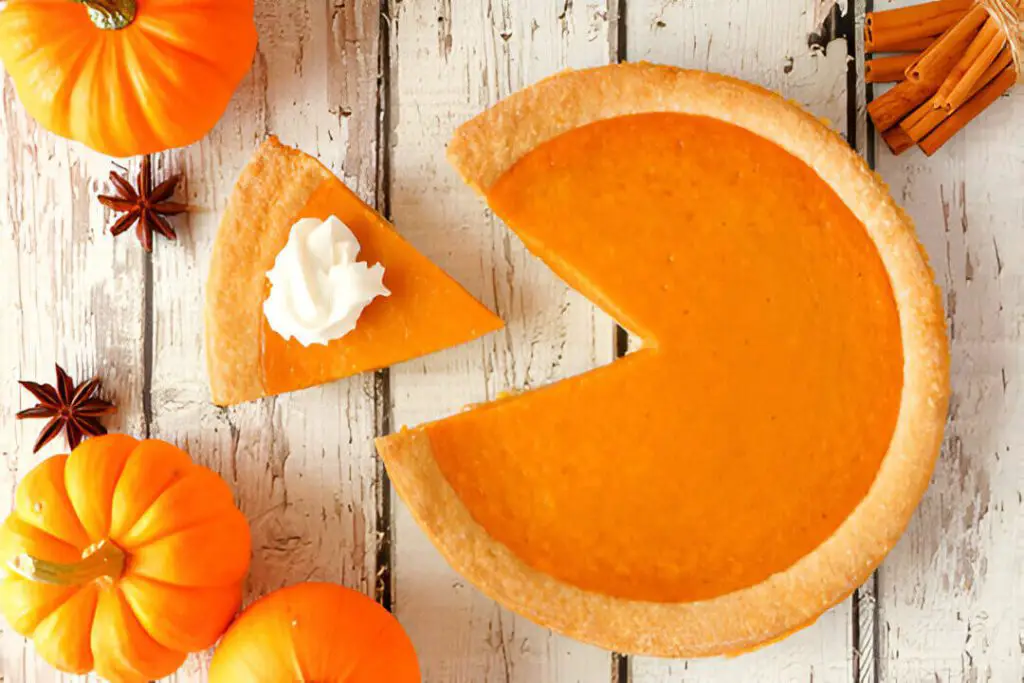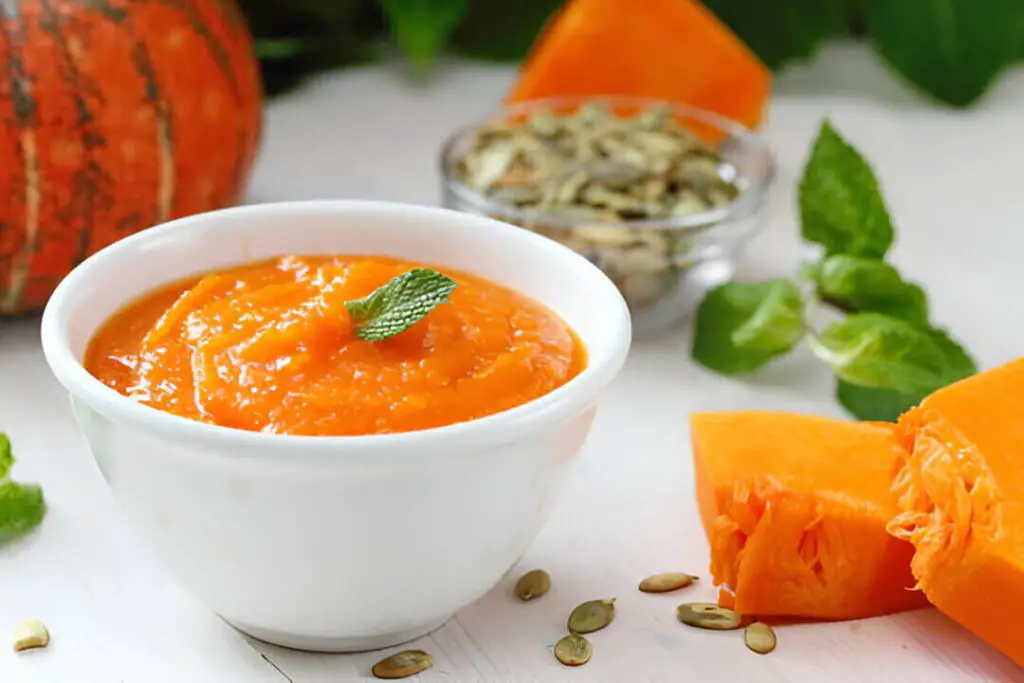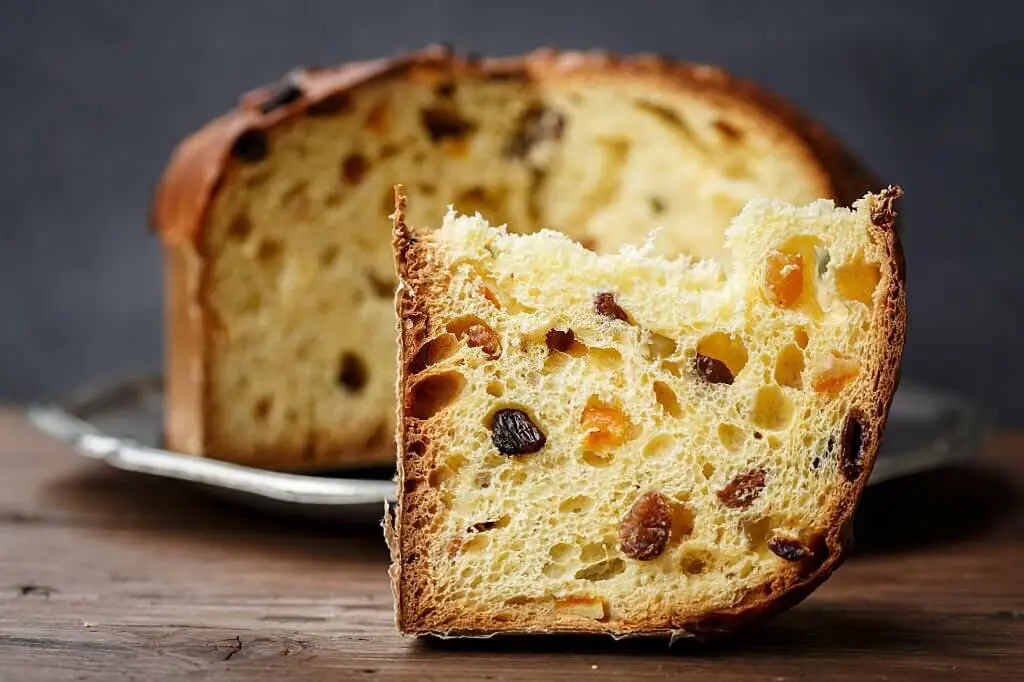You’ve carved them into jack-o’-lanterns, sipped their spiced latte versions, and delighted in pumpkin pies during the holidays. But have you ever stopped to really think about what do pumpkins taste like?
I mean, we all know pumpkin is delicious in just about any form. Those warm spice blends and buttery crusts definitely help. But strip away all the extras and spices—what does the humble pumpkin bring to the flavor party on its own?
If you’re scratching your head a bit, don’t worry. Describing the taste of pumpkin is trickier than you’d think! It’s kind of like the Goldilocks of flavors—not too sweet, not too savory—just right in the middle, with a fantastic mix of earthy, nutty, and subtly sweet notes.
Still feeling a little baffled? No problem! By the end of this article, you’ll be a full-fledged pumpkin flavor expert. We’re going to dive into pumpkin’s unique taste profile, how it differs from other squash varieties, the impact of cooking methods, and extra bonus pairings that complement pumpkin’s deliciousness.
What Do Pumpkins Taste Like?
When you take a bite of pumpkin, there’s no mistaking that distinctive taste. It’s like a mix of fall spices, buttered nuts, and sweet potatoes all rolled into one quirky flavor explosion.
At its core, pumpkin has a delightfully mild sweetness that makes it super versatile for sweet and savory dishes alike. But there’s an unmistakable earthy, almost woody quality that keeps that sweetness nicely grounded. Some pumpkin enthusiasts also detect hints of brown sugar, honey, or caramelized flavors.
Then we’ve got to talk about that unique nuttiness that makes pumpkin so deliciously different. It’s kind of like the flavor lovechild of chestnuts, hazelnuts, and pecans. This nutty undertone brings a warmth and richness to pumpkin’s flavor profile.
But like any true flavor superstar, pumpkin is deeply influenced by a few key factors that can either mute or amplify its natural tastes. The variety of pumpkin you use, as well as whether it’s raw or cooked (and how), make a huge difference.
For example, the smaller sugar or pie pumpkin varieties tend to have way more of that concentrated sweet pumpkin essence we all crave. Larger pumpkins are lighter in flavor with less sweetness. Then you’ve got fun heirloom varieties like the fruity Jarrahdale or the crazy rich and nutty Red Kuri that kick things up a few notches.
Factors that Influence Pumpkin’s Flavor
Variety of Pumpkin
When it comes to exploring the wide world of pumpkin flavors, variety is definitely not overrated. Just like apples or potatoes, each type of pumpkin brings its own distinct taste to the table. Let’s dive into some of the most common and interesting pumpkin varieties out there.
Sugar/Pie Pumpkins
These smaller, denser pumpkins, like the New England Pie, Baby Bear, and Cinderella varieties, are the tried-and-true classic pumpkin flavors we all know and love. They pack in an incredibly concentrated sweet pumpkin essence with notes of brown sugar, molasses, caramel, and toasted nuts.
The flesh is thick and velvety when roasted or baked, with an almost custard-like richness. That moist, dense texture allows all those sweet, earthy pumpkin flavors to really develop and intensify.
These are far and away the best pumpkin varieties for pie baking as well as any recipes where you want those warm, robust pumpkin spice profiles to shine through boldly.
Carving Pumpkins
The iconic large jack-o-lantern carving varieties like the Connecticut Field pumpkin have a lighter, more mild, less concentrated pumpkin flavor compared to sugar pumpkins. They lack the full sweetness and density found in smaller pie types.
But that doesn’t mean these giants lack flavor entirely! You’ll still get those familiar earthy, squash-like notes with hints of nuttiness and gentle sweetness. They just won’t bowl you over with intense pumpkin taste.
Carving pumpkins actually work wonderfully for things like pumpkin breads, pancakes, or savory pumpkin dishes where you want the pumpkin essence to be more subdued rather than overpowering.
Heirloom/Specialty Varieties
Then we have the wide, wonderful world of heirloom, specialty pumpkins that bring an incredible range of unique flavors. Here are some highlights:
Jarrahdale – This beautiful blue-green heirloom variety tastes downright tropical! It has an intense sweet pumpkin flavor with distinct notes of honey, melon, and even banana.
Red Kuri/Hubbard Squash – With its thick, bright orange flesh, Red Kuri pumpkins pack an incredibly rich, dense, sweet-yet-savory pumpkin punch and dominant chestnut-like flavors.
Long Island Cheese – This old-fashioned pumpkin variety is beloved for its amazingly smooth and velvety texture with just the right balance of sweet and savory pumpkin notes.
Musquee de Provence – Affectionately called the “fairytale” pumpkin for its shape, this French heirloom delivers an incredible depth of sweet nuttiness reminiscent of hazelnuts and brown butter.
Kabocha – Originally from Japan, these squat green-tinged pumpkins have a signature intensely sweet, almost fruity flavor with strong notes of chestnut and pumpkin pie spices.
With so many incredible options, it’s easy to find the perfect pumpkin to satisfy any taste preference. From classic and comforting to delightfully unexpected, these humble winter squashes prove variety really is the spice of (pumpkin-flavored) life!
Raw vs. Cooked
This may come as a surprise, but raw, fresh pumpkin actually has a very mild, almost watery flavor with just a hint of nuttiness. Cooking is what unlocks and concentrates all those deep, robust pumpkin-y flavors.
Cooking Method
How you choose to cook pumpkin also impacts its flavor in a big way:
- Roasting – This dry heat method allows pumpkin’s natural sugars to caramelize, resulting in an intensely sweet, almost candied pumpkin flavor with lovely roasted, nutty notes.
- Baking – Similar to roasting, baking pumpkin concentrates its sugars and rich flavors. It also allows the flesh to dehydrate slightly for an even more dense, velvety texture and taste.
- Boiling/Steaming – These moist cooking methods help retain pumpkin’s fresh, vibrant flavors while mellowing out any bitter notes. The result is a bright, sweet pumpkin taste.
- Pureeing – Whether roasted or boiled, pureeing pumpkin gives it an incredibly smooth, creamy, almost custard-like essence that makes flavors seem richer and more velvety.
So as you can see, the flavor experiences can vary wildly depending on the pumpkin variety used and how you decide to cook (or not cook!) this incredible winter squash. One thing’s for sure: there’s a perfect pumpkin flavor profile out there for every taste preference!
The Role of Pumpkin in Different Cuisines
While pumpkin may scream “fall” and remind you of Thanksgiving pies, its culinary influences stretch far beyond just American traditions. This versatile squash has transcended cultures and borders to become a beloved ingredient in many global cuisines.
American Cuisine

Of course, we have to start with pumpkin’s beloved roles in American cooking and baking. Pumpkin pie is the iconic pumpkin-themed dessert, with recipes dating back to the 1800s. Those creamy pumpkin fillings loaded with warm spices like cinnamon, nutmeg, ginger, and cloves are a beloved part of the holiday season.
But pumpkin does so much more than just pie duty! Pumpkin bread, cookies, cheesecake, pancakes, muffins, and even pumpkin spice lattes allow us to enjoy those cozy pumpkin flavors in endless ways.
On the savory side, pumpkin shines in thick soups and stews, bringing rich, velvety body and sweet, earthy notes. Pumpkin also works beautifully in savory baked goods like pumpkin bread, biscuits, and scones. And let’s not forget pumpkin ravioli, risotto, pizza, and pasta sauces!
Mexican & Latin Cuisines
Travel south and you’ll find pumpkin incorporated into many authentic Mexican and Latin dishes. Calabaza en tacha is a classic Mexican pumpkin candy made by simmering pumpkin in piloncillo cane sugar until tender and syrupy.
Guatemalan pumpkin stew called jocón de pollo sees pumpkin combined with tomatillo, sesame seeds, cilantro, and chicken for amazing depth of flavor. The pumpkin helps thicken the stew while adding layers of earthy sweetness.
Caribbean-influenced pumpkin rice is a beloved side dish containing pumpkin or squash slow-cooked with rice, bacon or pork, peas, and fragrant spices like cinnamon and cloves.
European Cuisines
Pumpkin’s presence in European cooking tends to be more subtle compared to its starring role in American baked goods and Mexican cuisines. However, you’ll find pumpkins used in delicious ways across Italy, France, and beyond.
Italian chefs incorporate pumpkin into rich risottos along with amaretti cookies, parmesan, and nutty browned butter. Pumpkin also makes its way into sweet Italian treats like pumpkin gelato and biscuits.
In France, you’ll find pumpkin-based soups and stews like the classic soupe au potiron using pie pumpkins or other sweet varieties. Pumpkin may also show up in savory tarts and quiches.
Eastern European cuisines, like Ukrainian and Russian traditions, feature pumpkin in their baking, incorporating it into yeast breads, buns, soft cakes, and cookies.
Asian Cuisines
When it comes to Asian cuisines, pumpkin is highlighted in both sweet and savory preparations across multiple countries.
In Thailand, pumpkins are hollowed out and stuffed with delicious fillings like curry or stir-fried combinations of pork, shrimp, peanuts, and spices. Thai pumpkin custard is a beloved dessert.
Japanese pumpkin croquettes feature panko-breaded pumpkin patties that are fried to crispy perfection. Steamed or baked pumpkin breads and buns are also popular in Japan.
Indian cuisines commonly use pumpkin in curries, rice dishes like pumpkin biryani, samosas, breads, desserts, and even chutneys and pickles.
In China, pumpkins are stir-fried, roasted, and baked into a variety of dishes, from savory pumpkin pancakes and dumplings to sweet pumpkin cakes, tarts, and mooncakes.
So while pumpkin may feel like an American fall staple, you can clearly see how this humble squash has been embraced far and wide by different global cuisines. Each culture puts its own delicious spin on pumpkin’s sweet, nutty, and earthy flavors in both savory and sweet preparations!
Pairing Pumpkin with Other Flavors
While pumpkin is absolutely delicious all on its own, it’s also an incredibly versatile flavor that pairs beautifully with so many other tasty ingredients. From sweet to savory, pumpkin makes the perfect base for creative and complementary flavor combinations. Let’s explore some of the tastiest ways to expand pumpkin’s potential!
Sweet Combinations

Pumpkin’s natural sweetness makes it an ideal partner for other dessert-inspired flavors and indulgent ingredients:
Spices – The ubiquitous “pumpkin spice” blend of cinnamon, ginger, nutmeg, allspice, and cloves marries so perfectly with pumpkin’s earthy, caramelized notes. But don’t stop there—spices like cardamom, star anise, and Chinese five-spice work beautifully too.
Dairy – Butter, cream, and rich cheeses amplify pumpkin’s lush, velvety texture while accentuating its nutty, slightly sweet essence. Mascarpone, ricotta, and cream cheese are classic pairings.
Nuts – The nuttiness in pumpkin is the perfect excuse to double down with crunchy pecans, walnuts, hazelnuts, almonds…the list goes on! Nut flavors, extracts, and butters also complement pumpkin.
Warm Spices – Cinnamon, ginger, nutmeg, allspice, cloves… this classic “pumpkin spice” blend marries perfectly with pumpkin’s earthy sweetness.
Citrus – A touch of bright citrus, like orange zest or candied lemon/grapefruit peel, cuts through pumpkin’s richness for a lovely flavor contrast.
Booze – Spirits like rum, bourbon, brandy, and beer/stout add warmth, depth of flavor, and enhance pumpkin’s cozy qualities.
Molasses/Maple/Brown Sugar – Double down on pumpkin’s inherent molasses-y notes with these rich sweeteners.
Vanilla – Vanilla’s aromatic warmth is the perfect companion to pumpkin’s spicy-sweet side.
Savory Combinations
But pumpkin isn’t just a one-trick (pie) pony! It can also be the star of incredibly tasty and unique savory dishes when paired with the right flavors:
Herbs – Woody herbs like rosemary, thyme, and sage complement pumpkin’s earthy side. Bright herbs like sage also offer a lovely, fragrant contrast.
Cheese – Nutty, salty cheeses like parmesan, pecorino, gruyere, and aged cheddar are sublime with pumpkin. Creamy, tangy cheeses like goat cheese or feta work too.
Proteins – Pumpkin’s subtle sweetness plays incredibly well with rich, smoky, or salty proteins. Think chorizo, pancetta, bacon, pork sausage, turkey, and even seafood like shrimp or salmon.
Vinegar – A touch of acidity from balsamic, sherry, red wine, or apple cider vinegar helps brighten and balance pumpkin’s sweetness in savory applications.
Aromatics – Onions, garlic, and shallots help build a savory backbone and depth of flavor.
Nuts/Seeds – Toasted nuts, pepitas, pine nuts, etc. amplify pumpkin’s nuttiness and add great crunch.
Feeling inspired to get creative with new pumpkin pairings? Your delicious options are truly endless when you let pumpkin’s sweet yet earthy essence be your culinary guide!
FAQs
What is the texture of cooked pumpkin like?
When cooked, pumpkin develops a rich, velvety, almost custard-like texture – especially when pureed or mashed. The flesh becomes very soft and creamy, yet dense. Some pumpkin varieties maintain a little more stringiness than others.
How would you describe the aroma of pumpkin?
The scent of fresh pumpkin is fairly mild and earthy. However, when cooked, pumpkin develops much richer, warmer aromas that are reminiscent of caramelized brown sugar, toasted nuts, baking spices, and even hints of maple or molasses.
Pumpkins are part of the larger winter squash family, but they have some distinct traits. Pumpkins tend to have a more pronounced sweet, nutty, and dense flavor compared to squashes like acorn or delicata. The texture is also richer and creamier when cooked.
Can you eat the skin/rind of a pumpkin?
Most pumpkin varieties have tough, inedible rinds that need to be removed before cooking or eating the flesh. However, some smaller decorative pumpkin types may have edible skins if roasted or cooked. In general, though, the rind is discarded.
How can you intensify pumpkin’s flavor?
Roasting or baking pumpkin is the best way to concentrate and caramelize its natural sugars for maximum rich, sweet pumpkin essence. Adding warming spices, butter or cream, brown sugar, maple syrup and other complementary flavors also amplifies pumpkin’s taste.
How long does fresh pumpkin last?
An uncut pumpkin can last 2–3 months when stored in a cool, dry place. Once cut, the pumpkin should be covered and refrigerated, where it will keep for about 5–7 days. Cooked pumpkin puree can be frozen for longer storage.
Conclusion
Whether you’re a die-hard pumpkin spice fanatic or someone who has been sleeping on this sensational squash, one thing is delightfully clear: pumpkin is a true flavor superstar!
Its unique taste profile masterfully blends rich sweetness with savory earthiness, warm spices with smooth nuttiness. From velvety pies and creamy lattes to hearty stews and curries, pumpkin’s versatility allows it to grace both our sweetest indulgences and most satisfying savory dishes.
By exploring the impact of variety, cooking methods, global culinary influences, and complementary flavor pairings, we’ve gotten to the root (vegetable) of what gives pumpkin its broad appeal. It’s simply a flavor like no other!
So next time you carve that jack-o-lantern or crack open a can of pumpkin puree, take a moment to truly appreciate the taste phenomenon before you. Pumpkin is so much more than just a seasonal treat; it’s an edible experience that warmly transports you to the flavors of fall, no matter what time of year.
With its intriguing mix of familiar yet distinctive sweet and savory notes, pumpkin’s unbeatable flavor deserves to be more than just a passing holiday fling. It’s a delicious, incredibly versatile ingredient that has earned its place as a year-round kitchen staple.
Whether slathered in spices for your morning latte, roasted with savory herbs for dinner, or baked into a classic dessert, pumpkin’s unique flavor will always hit a cozy, nostalgic, sweet-and-savory spot. So go ahead and indulge in all that pumpkin-y goodness! Your taste buds will thank you.



